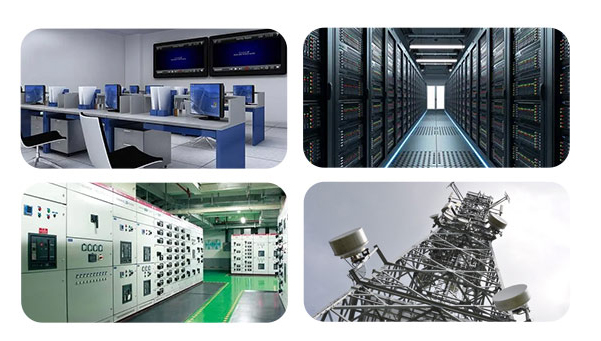With the deepening of digital transformation, the demand for data centers is increasing. Traditional data centers are limited in construction and maintenance and are difficult to meet the flexibility and scalability needs of business requirements. With the emergence of modular data centers, the industry has begun to rethink the advantages and disadvantages of traditional data centers.

How Important is the Data Center ?
Data centers are critical infrastructure for businesses, organizations, and governments around the world. They serve as hubs for information storage, processing, and management, and make it possible for businesses to operate and deliver services to customers 24/7, regardless of location.
What are Modular and Traditional Data Centers?
Traditional data centers are often designed as a single, standalone facility that houses all of the necessary computing equipment, including servers, storage arrays, networking equipment, and cooling systems.
They typically require large amounts of space and are built using a custom design that can take months or even years to construct. These data centers are often highly resilient and provide a high level of availability and security.
Modular data centers, on the other hand, are designed as pre-fabricated units that can be quickly assembled and deployed on site. They are typically smaller in size than traditional data centers and can be easily expanded as needed to meet changing demand.
The modular design allows for a more flexible deployment, which can be beneficial for companies that need to quickly deploy new IT services in order to stay competitive. Modular data centers can also be more energy-efficient than traditional data centers, as they can be designed to use free cooling methods that rely on natural air circulation rather than electricity-hungry cooling systems.
What is the Difference Between Traditional and Modular Data Centers?
Traditionally, data centers have been built using a custom, one-off approach, where each facility is designed and constructed from scratch. However, in recent years, a new approach to data center design has emerged: the modular data center.
Modular data centers (MDCs) are built with pre-fabricated, standardized components that are assembled off-site and delivered to the final location. This approach offers a number of advantages over the traditional approach to data center construction. But which is right for your business: MDCs or traditional data centers (TDCs)? Let's take a closer look at the differences between the two.
- Scalability: One of the main advantages of MDCs is their scalability. These data centers are designed to be modular, meaning that they can be easily expanded or contracted as business needs change. TDCs, on the other hand, are typically built with a fixed capacity, which can make it more difficult to adjust capacity up or down as demand changes.
- Speed of Deployment: MDCs can be deployed much more quickly than TDCs. Because the components are pre-fabricated and standardized, MDCs can be assembled off-site and delivered to the final location, dramatically reducing construction time. TDCs, on the other hand, require custom construction, which can take many months or even years to complete.
- Cost: MDCs can be more cost-effective than TDCs in some cases. Because the components are pre-fabricated and standardized, MDCs can be produced at scale. Additionally, the assembly process is quicker, reducing labor costs and other expenses. TDCs, on the other hand, require significant site preparation and custom construction, which can be more expensive.
- Space Requirements: MDCs can be more compact than TDCs, making them an ideal choice for businesses with limited space. Because the modules are pre-fabricated and designed to be stacked vertically, MDCs can take advantage of vertical space. TDCs, on the other hand, require a larger footprint, which can limit the number of possible locations.
- Customizability: TDCs offer more customization options than MDCs. Because they are built from scratch, TDCs can be designed and configured to meet specific requirements. MDCs, on the other hand, use standardized components, which limit the ability to customize.
Conclusion
Both MDCs and TDCs have their own advantages and disadvantages. MDCs offer scalability, speed of deployment, and cost-effectiveness, while TDCs offer more customizability.
When deciding which approach to use, it's important to consider the specific needs of the organization and to evaluate each option carefully. For businesses looking for a flexible, cost-effective solution that can be deployed quickly, modular data centers are a promising option to consider.
COOLNET can focus on core competencies. By offering a holistic approach to technical consulting, product supply, system integration and service provision, businesses can provide end-to-end solutions that meet the ever-evolving demands of customers.
To learn more about modular data centers and how they can benefit your business, visit our website at coolnetdatacenter.com.
